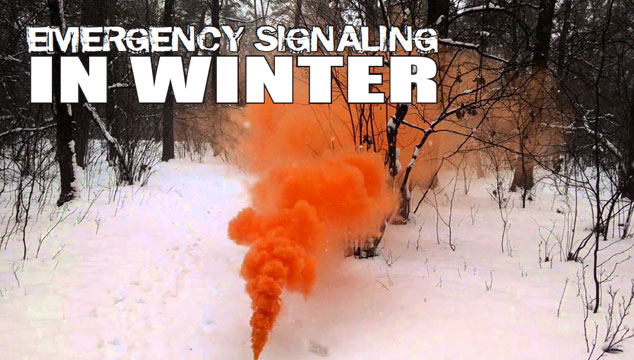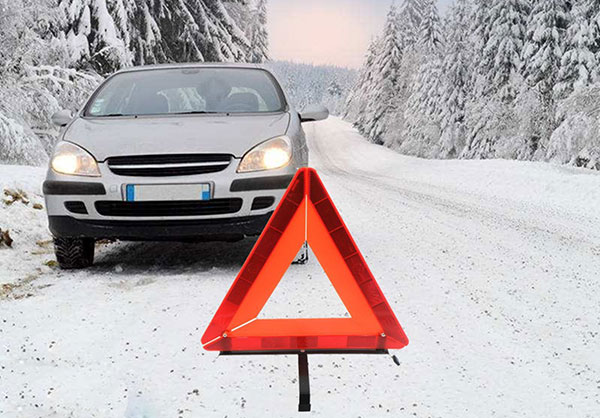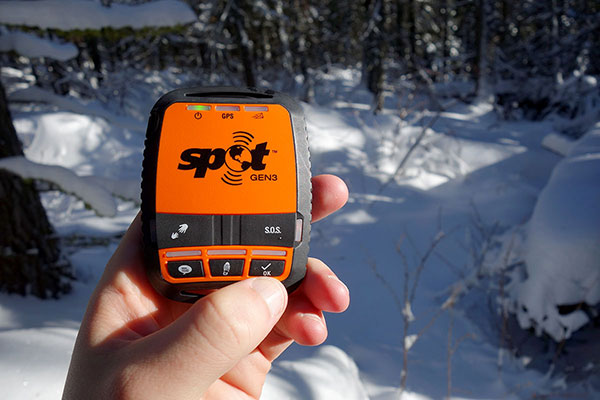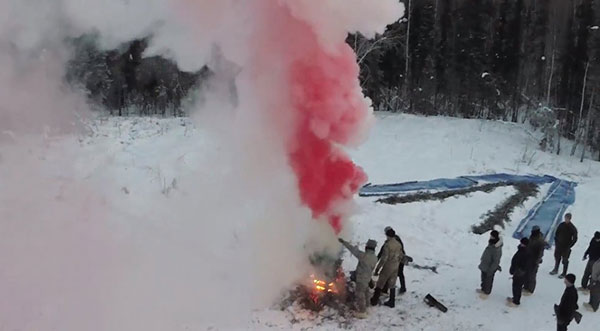
Bottom Line Up Front (BLUF):
- Don’t forget automotive signals, the mundane emergency is more common than the exotic variety.
- Leave a note when you head out. Many survivors regretted not having left one.
- Buy a satellite messenger if you spend a lot of time outdoors. You’re much more likely to need a ride from a buddy, a tire, or a little gas than full-blown rescue.
- Sometimes a little preparation goes a long way. An LED, Fisher pen cartridge, a few sheets of water-resistant paper, signal mirror, adhesive backed retroreflective tape, a vial of potassium permanganate, and a whistle take up precious little space. You can use a pocket survival/self-recovery that will give you a variety of signaling options.
In the real world, signaling seldom goes like it does in the scripted survival shows on TV. I know a guy who spent well over a year adrift in the Pacific. He saw over a dozen ships and tried to signal all of them, but none sent help. On one occasion, he was close enough to see the faces of men fishing off the back of a cargo vessel. They just waved and kept on fishing. Can you imagine how frustrating that must have been?
Automotive Signals
It is easy to go straight to the exotic and pass over the mundane. However, chances are most folks will use automotive signals more often than signals in wilderness emergencies.

Examples of Basic Automotive Signals:
- Reflective Triangle Stand – Unfortunately I got to use this one just last week. Place reflective triangles far behind your vehicle to give drivers plenty of time to react, gawk, and rubberneck. Also place the triangles a couple feet into the emergency lane so they don’t run it over.
- Strobe – Strobes with stands are most effective in winter. Place high on vehicle if snow is deep.
- Raised Hood – A simple signal that communicates at a glance that your vehicle won’t be moving and that motorists should go around it.
- Road Flare – Models with wire stands are most effective in areas where snow is common.
- Retroreflective Triangle Blazon – Common in many emergency kits, it enables the bag to be used as a safety signal.
- SOS/Stop Flag – Signals passing motorists that you could use a hand.
Long Range Signals
The Reality of PLBs and Satellite Messengers
If you spend a lot of time outdoors in the U.S., get a Personal Locator Beacon (PLB) or a satellite messenger. Just realize that even PLBs and satellite messengers seldom work like they do on TV or in the movies. First the device must work. If the device works, the message must be correctly passed from the satellite to the nearest ground station. Then from the ground station to the mission control center. Finally from the mission control center to the rescue coordination center, all without any errors.
If the weather permits and you’re the highest priority call then a mission is launched. The mission deploys to the area the PLB told them it was at when you hit the button. The team that is dispatched will depend on your location, so it won’t necessarily be a helicopter. It may be volunteers from the county on foot. Depending where you are, it may take them a day or two to get to you. So you need to survive until they arrive. When rescuers arrive in the area, they’ll still need to find you. This is where “last mile” signaling comes in.
Shouldn’t everyone get one? No, because who responds to the beacon depends on where it’s activated and many countries lack the resources to respond.
What is Great about Satellite Messengers
Two-way satellite messengers are a huge leap forward in signals technology. They enable both emergency and non-emergency two-way communication. Think back on all your outdoor adventures. How many times have you needed to be rescued? Now, how many times have you self-recovered?

It’s important to have the ability to call for rescue even if you haven’t needed it yet. I bet you’ve been in a bind before and needed a ride, a tow, a part, or to let your loved ones or work know you’re going to be late. This is part of why I focus on self-recovery first and rescue second.
Examples of Long Range Signals:
- Cell Phone
- Personal Locator Beacon (PLB)
- Satellite Messenger
- Satellite Phone
- Radio – Areas have specific frequencies. National wilderness protocol is for hams to announce their presence on and to monitor national calling frequencies for five minutes beginning at the top of the hour. This is every three hours from 7am to 7pm while in the backcountry. The frequencies are 52.525, 146.52, 223.50 and 1294.50 MHz. Try the 2m frequency first. Carry a pocket repeater directory and be aware of what repeaters are nearest your location.
Last Mile Signals for Winter
Winter signaling has aspects that differentiate it. Trail signs are pretty much worthless in the snow. Everything is worthless in a blizzard, so you must survive long enough for a rescue team to be dispatched. Then get last mile signals up.
Visual Last Mile Signals
I carry my signaling equipment together on a lanyard. I can quickly ready it for use as soon as rescuers are within visual or audible range. They may not be within range for long.
When constructing visual last mile signals, think:
- Color
- Contrast
- Movement
- Groups of three
- Size
Potassium Permanganate – One of the most useful survival chemicals, potassium permanganate produces vivid pink, red, or purple when mixed with water. Add a little water and you get purple, more makes it red and then pink. It doesn’t take very much, so there’s no excuse for leaving this one out of the survival/self-recovery kit. Carry it in your pocket everywhere you go. Dye three patches of snow 25 meters apart. Letters must be huge to be seen from the air, even by low-flying aircraft. Minimum 1 meter lines x 6 meter letter height is recommended for signals to be seen by air.
Leave a Note – Probably one of the simplest and most effective things you can do is to leave trip plan with a responsible individual. Give instructions in what to do if you don’t show up. Once in need of rescue, also leave notes at campsites you abandon. Also leave notes along the trail, especially at intersections of trails or lines of drift. Explain your condition and plan. Mark notes with trail signs, blazes, cairns, or squares of brightly colored retroreflective tape.
Signal Fires – Signal fires are most effective at night in winter or if you have a vehicle. I say that because green pine boughs and other vegetation produce gray-white smoke that doesn’t contrast well with snow. It’s easiest to produce black smoke by adding a rubber tire or motor oil to a hot fire.

Construct three fires 25 meters apart in a straight line or triangle. Against a snowy backdrop, dark smoke is most visible during the day. Motor oil, rubber tires, or green boughs will produce smoke. Building tall fires casts more light at night. If signaling others on the ground, building the fires on high ground is more effective than in valley. Fires on raised platforms are ideal. Get fires going early and keep them going where possible. Dead trees can also be used as tree torches.
Mirror – Primarily a daytime signal. Flashes are visible at long ranges. Flash the horizon even if rescuers aren’t visible. I just hope you have better luck than my colleague.
Body Signals – Can be useful once spotted.
Chemlight – Attach to cordage and whirl to create a large saucer of light.
Laser – Useful day and night, signal lasers differ from laser pointers and laser sights.
Flashlight – Conserve battery for last mile rescue or when others are visible. Flash SOS. Bright, tightly focused lights are more effective.
Strobe – Batteries of strobe lights last longer than lights constantly switched on. Conserve battery for last mile rescue or when others are visible.
Signal Panel – Can be effective against snowy background. Deploy in threes about 25 meters apart. Suspend above ground to create contrast and use shade on snow where possible. Distress orange emergency blankets are also visible at a great distance.
Flags – Set in threes about 25 meters apart. Most effective if brightly colored and moved by the wind.
Retroreflective Tape – A short range signal primarily for night use when rescuers are using lights. They’re so small there’s no excuse for not carrying it. Also good for constructing improvised fishing lures.
Pyrotechnic Signals – Ready ahead of time for use when rescuers come into view.
- Smoke – Orange or red where possible. Day.
- Pen Flare – Red meteor, day/night, 150m height.
- 12ga. Flare – Red meteor, day/night, 150m height. If you carry a 12 gauge, stick a few flares in your kit.
- Gyrojet – Travels higher than pen flares using a rocket instead of a ballistic cartridge. Red meteor, day/night, 300m height.
- Hand-held Flare – Can also be used to start fires. Day/night but most effective at night.
- Tracer Ammunition – Has been observed at distances of up to 6 miles. Keep in mind it could also be mistaken for hostile ground fire under certain circumstances. Day/night.
- Star Cluster – Red cluster, day/night, 200m height.
- Parachute Flare – M126 red or M127 white, day/night, 200m height.
- Handheld Marine Pyrotechnics – Day/night. Smoke and flare.
Audible Signals – Group blasts in threes.
- Car Horn – Can carry a surprising distance and hard to mistake on back roads.
- Air Horn – Louder and more effective than the typical car horn.
- Whistle – Saves your voice and can be heard at far greater distances. The Storm® and Windstorm® whistles are really loud. Pack earplugs with them or you’ll damage your hearing. Pea-less designs are best for winter use since peas are easily frozen in place or can shatter in the cold.
- Gun Shots – Common backcountry signal and a sound reason to bring a little extra ammunition along. Use what you have handy.
Conclusion
All the preparation in the world doesn’t mean you won’t find yourself in need of rescue. Planning and experience is best to help you self-recover. But in case of an emergency, know how to alert potential rescuers. After all, anything can happen in a survival scenario.
